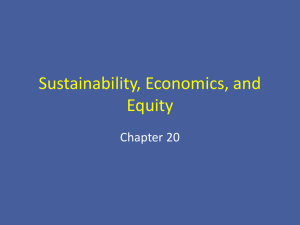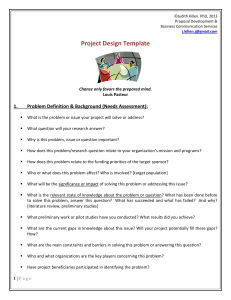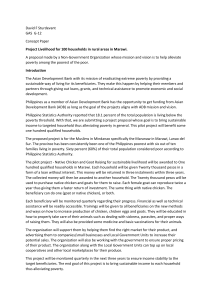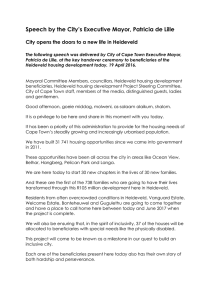Sutainable Exit Strategies
advertisement
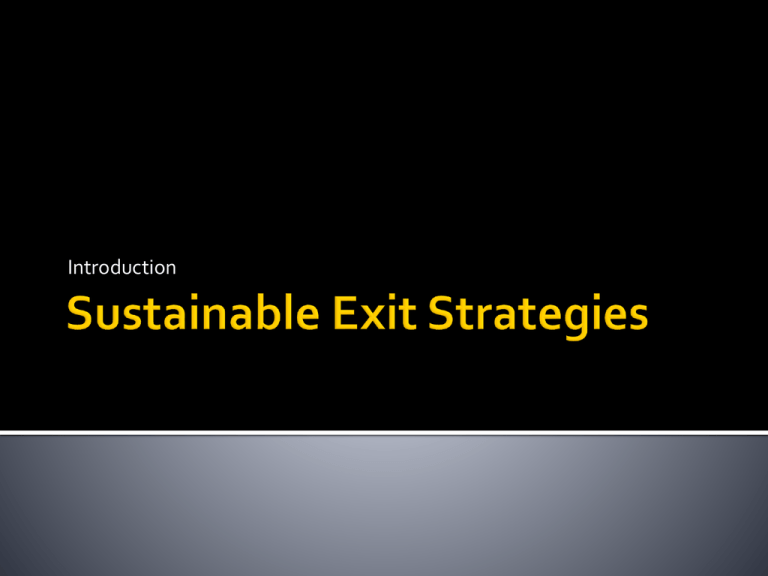
Introduction The objective is to ensure that the beneficial impact of the project continues after the project has finished The idea of sustainable impact has at least become generally recognized and accepted by all parties in the development process for shiree both the DFID and the GoB MTRs placed emphasis on sustainability We have at least moved beyond the “it was working when I left” approach For Infrastructure projects: a mechanism that will ensure the continued operation and maintenance of the facilities – eg toll fees, community engagement, transfer of ownership and responsibility to government or the private sector For Technical assistance/capacity building projects : embedding skills in sustainably funded local institutions, permanent changes to systems, procedures or laws, establishing accountability mechanisms For private sector market development projects- viable independent businesses established Beneficiaries have been lifted off the bottom through the project intervention – how to ensure that they will not just sink back down once the project is ended? - protecting the gains, continuing the direction of travel “The responsibility will be handed over to local government” – but with little or no contact with local government “The project will be absorbed into the government budget” – but no one asked the Ministry of Finance! “ The business will be sustainable through profits” – but failing to recognize that during the project the business relied on subsidy “The community or group will manage the activity” – but ignoring how much the group was dependent on the NGO field staff “Dependent individuals will transfer to government safety nets” – but no change in the mechanism through which these are allocated “beneficiaries will transition into mainstream services” – but are the service providers for this segment available? “local elites will continue to provide support” – is there any incentive or mechanism in place? “assets have been transferred” – they can easily be lost Exit or sustainability strategies often fail to address the underlying factors causing or tending to sustain extreme poverty – and hence have a low probability of success Poverty Drivers : shocks, health, family fragmentation, lost assets/savings Poverty maintainers: low wages, no access to social protection, low social capital, debt, no regular work thresholds 70 35.2 UPL 2012 60 21.1% LPL 2012 52 Income PCPD 50 40 34 28.2 30 22 20 Exclusion threshold 17 March 2010 mean 10 0 3-5% Threshold 2012 March 2012 mean 61 For Scale Fund (Round One, Phase One): between March 2010 and March 2012 beneficiaries showed a 66% increase in average income (rural) and 90% (urban) (before inflation) CMS3 data But 76% (rural) and 31% urban BHH remain in extreme poverty on the basis on the HIES Lower Poverty 2010 line adjusted for inflation Between March 2011 and March 2012 there was a “plateauing effect” in the rate of improvement across several indicators How to keep people moving in an upward trajectory beyond the period of direct asset and cash transfer?- or at least to ensue that they don’t slip back down How to ensure that beneficiaries can become engaged with other income and wealth generating processes? There is no magic formula that will ensure sustainability Government agencies (national/local), NGOs, communities and community organisations and the private sector are all likely to be part of a realistic and achievable strategy to sustain the positive impact of project interventions

